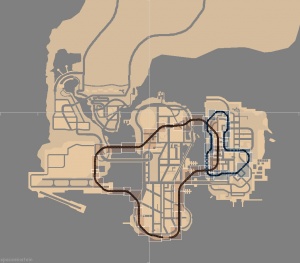Difference between revisions of "Train.dat"
(→Format) |
(→Format: unknown params; not 100% sure) |
||
| Line 20: | Line 20: | ||
| {{a|c}} | J,K,L || float[3] || Upper right zone of entry for the camera | | {{a|c}} | J,K,L || float[3] || Upper right zone of entry for the camera | ||
|- | |- | ||
| − | | {{a|c}} | M || float || | + | | {{a|c}} | M || float || far clip plane ? |
|- | |- | ||
| − | | {{a|c}} | N || float || | + | | {{a|c}} | N || float || near clip plane |
|} | |} | ||
Latest revision as of 01:30, 13 June 2015
The train*.dat sets up a cinematic camera view when you ride the train in GTA III. Cinematic mode starts and widescreen switches on once the train starts moving along the track and ends when it reaches a station. train.dat is used for the Portland El and train2.dat is used for the subway. Interestingly, these files are not required by the game and so can be deleted. This would remove all cinematic view and makes the camera stay with the same controls as when you first enter the train.
Vice City also contains the same two files but they are leftover from GTA III. The files are never read by the game.
Format
The general format is unlike any data files. All entries must end with a comma; a newline is optional. The very end of the file must end with a semicolon. The entire file can be treated like a single line. Each entry sets up a camera node in the following format:
The game allows up to 800 camera nodes to be defined.
